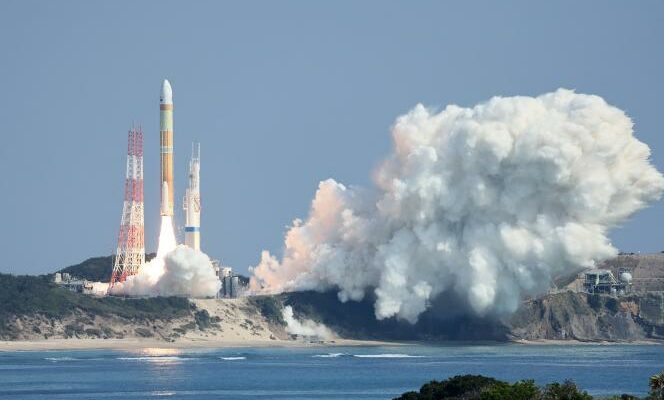“An anomaly in the second floor power supply system” : this is the first explanation given, Friday, March 10, by the Japanese space exploration agency (JAXA) for the failure three days earlier of the inaugural launch of its new H3 rocket. The accident threatens Japanese ambitions in the space sector.
The launcher was destroyed in flight, fourteen minutes after taking off from the Tanegashima space center, in the south-west of the archipelago. It carried the Advanced Land Observing Satellite-3 (ALOS-3). Also known as DAICHI-3, it was to be used for Earth observation and data collection for mapping and disaster management.
“Our top priority is to determine the cause of the problem and restore confidence in our rockets”, reacted Hiroshi Yamakawa, president of the Japan Aerospace Exploration Agency (JAXA). The failure is the second in six months for the Japanese agency, after that of the small solid-fuel rocket Epsilon, designed to launch scientific satellites.
Security issues
The H3 is the result of a project launched in 2012. It is carried by the space agency and Mitsubishi Heavy Industries (MHI) and benefits from an investment of 200 billion yen (1.4 billion euros). The launcher is to succeed the H-IIA, which will be withdrawn from service in 2024 after its 50e launch. Above all, it must allow Japan to position itself in the commercial space sector. The H-IIA, which has a 98% success rate, took almost only Japanese government satellites.
However, the number of satellite launches in the world has multiplied by fourteen between 2011 and 2021. Aware of the commercial interest, but also of the security issues related to space – the “fourth battlefield” after the earth, the sea and the air – the Prime Minister, Shinzo Abe (2012-2020), had unveiled, in January 2015, an ambitious plan for the development of the space industry, which notably enabled the emergence of local start-ups , such as Interstellar, which develops small rockets called “Momo”.
To become competitive in a market dominated by SpaceX, Elon Musk’s company, and its 63 million euro launches, JAXA engineers have relied on cost reduction. Nearly 90% of the electronic components of the H3 are already existing products, some of which are used in the automobile. The LE-9 engine is 1.4 times more powerful than the engine used in the H-IIA. It has fewer parts and its structure is simpler.
You have 50.1% of this article left to read. The following is for subscribers only.
